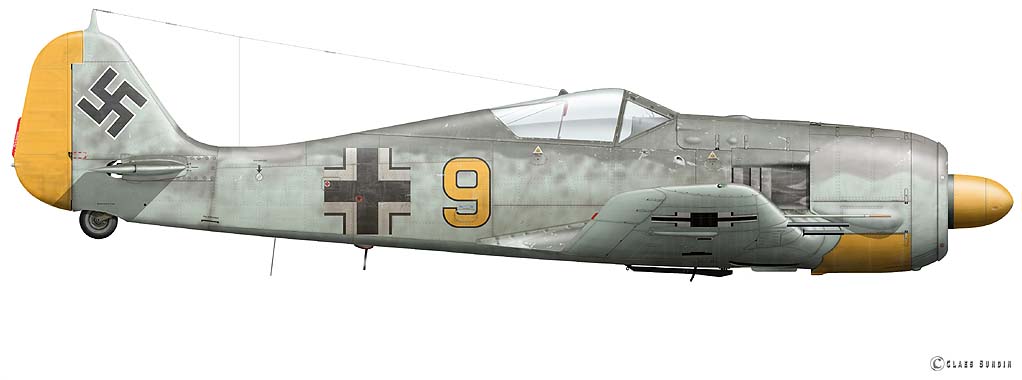|
During the period from
September to December 1943, JG 26 was involved in a battle of
attrition with the Allied raids on mainland Europe and the deep
penetration raids into Germany. Twenty-six points of combat instructions
were issued in early September, addressing some of the problems
combatting the Allies, and others the Jagdwaffe's low rate of
success against the four-engine bombers. New attack techniques
for attacking the bombers were therefor to be applied. Frontal
attacks were to be restricted in favor of attacks from the rear.
From now on the top priority was to break-up the bomber formations.
The pilots' trepidation when it came to attacking the "viermots"
was also something the leadership within the Luftwaffe, including
Generalleutnant Adolf Galland, had noticed and now tried to resolve
by threatening the pilots with court-martial proceedings. Strangely
however, not a single one of the 26 points addressed how to deal
with the growing problems posed by the increasing numbers of
Allied escort fighters. When it came to the two Kanalgeschwaders
- JG 2 and JG 26 - Galland wanted them to make attacks on the
escorts to tie them down and force them to drop their extra fuel
tanks. The inland units would be the beneficiaries, as attacks
on unescorted bomber formations were known to be devastating.
Both Geschwaders were enthusiastic supporters of this idea, which
worked well the few times it was tried. However, this tactic
was impossible to implement later when the numbers of American
fighters was able to overwhelm the defenders. During November
the Allies continued their attacks on targets in France and the
Low Countries as well as attacking German cities. By the middle
of November however, the weather over the continent deteriorated
so much that it was difficult for the 8th USAAF to carry out
its planned missions. This resulted in I./JG 26 flying a small
number of missions up to 29 November. On this day, the USAAF
sent six combat wings to bomb Bremen and at the same time 72
B-26 bombers, with an escort of 107 Spitfires, hit the Chiévres
airfield. Soon, air battles raged from Pas de Calais to western
Belgium. While III./JG 26 engaged the B-17 bombers, the rest
of the Geschwader took on the B-26s and their escorts. In this
clash, I./JG 26 lost four Fw 190 A-6s, with two pilots killed
and another two wounded without claiming a single enemy aircraft.
There is not much information about Uffz. Wilhelm Düsing,
other than he must have been born under a "lucky star"
surviving close to two years of air combat under the most difficult
conditions a fighter pilot can imagine, and to survive the ordeal.
He was however able to shoot down one enemy aircraft, a Spitfire
claimed over Nijmegen on 17 September. He was also shot down
twice. The first time on 14 February 1945, when he successfully
bailed-out slightly injured from his Fw 190 D-9 after a battle
with a Spitfire pilot from RAF No. 41 Sqn. The second time he
was shot down was on 19 March, flying in another Dora-9 when
Düsing was hit by a P-51 pilot from the 479th FG. This time
he hit his head when landing in his parachute, with the injury
severe enough to keep in out of service for the rest of the war.
Note that
this profile and caption is from my new book Luftwaffe Fighters,
Profile book No 10
|


